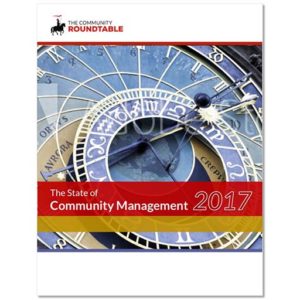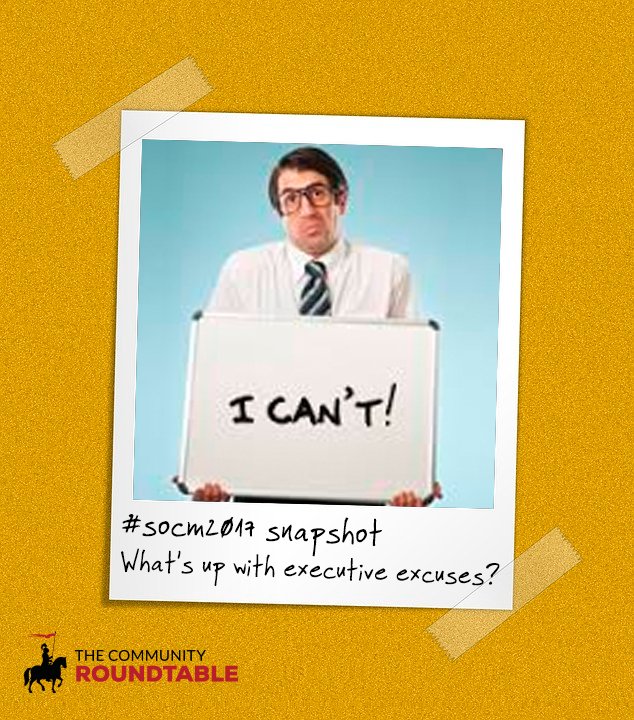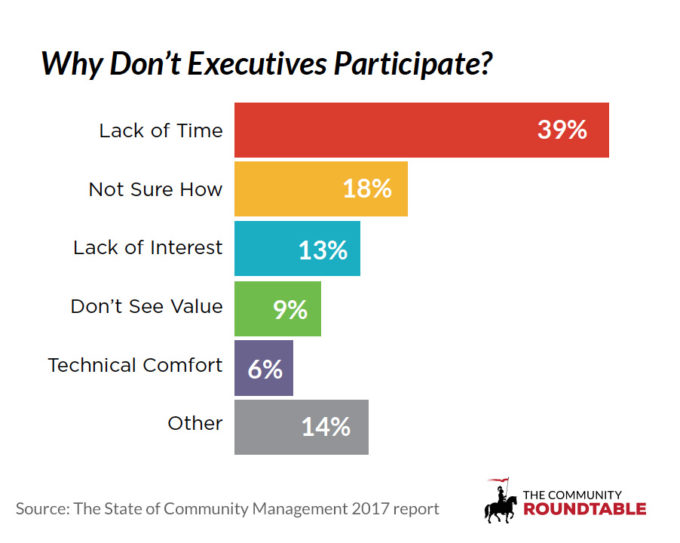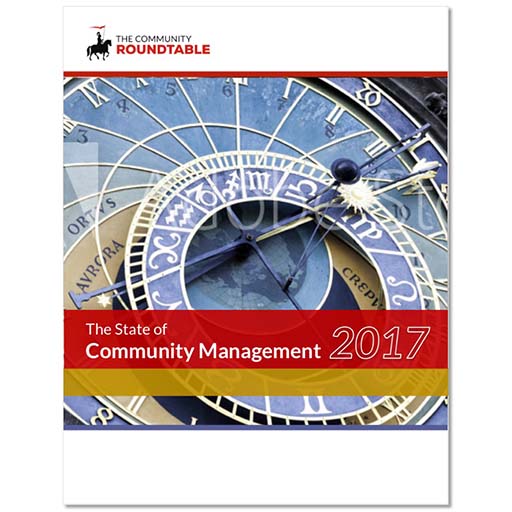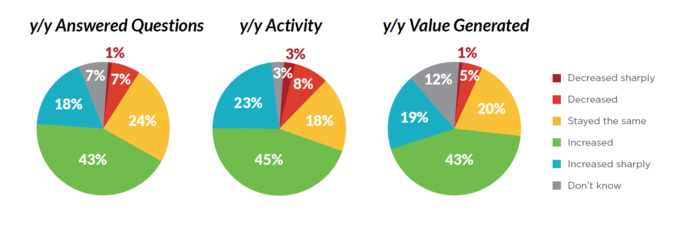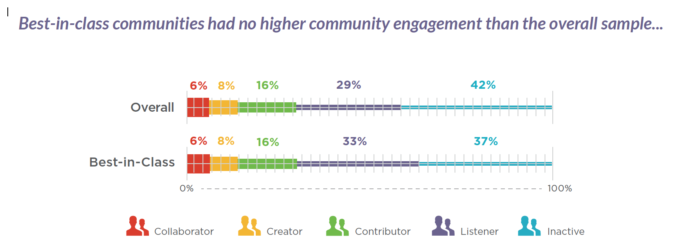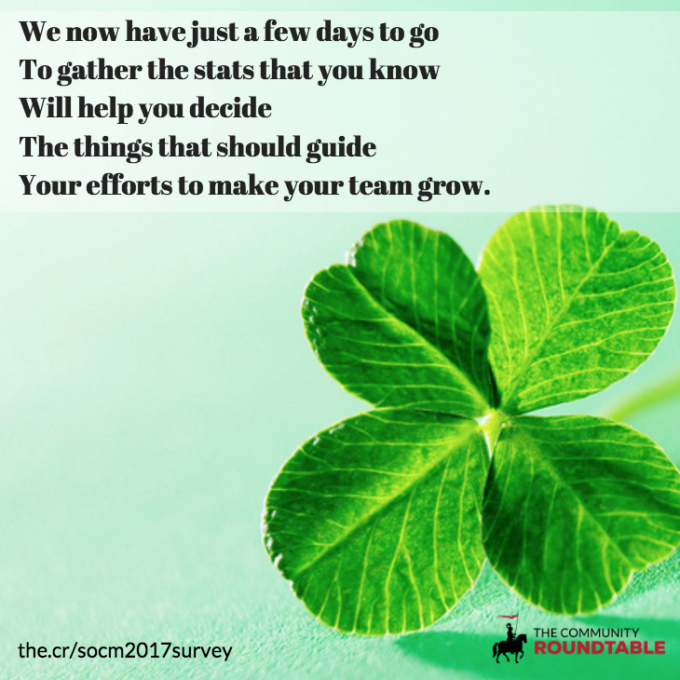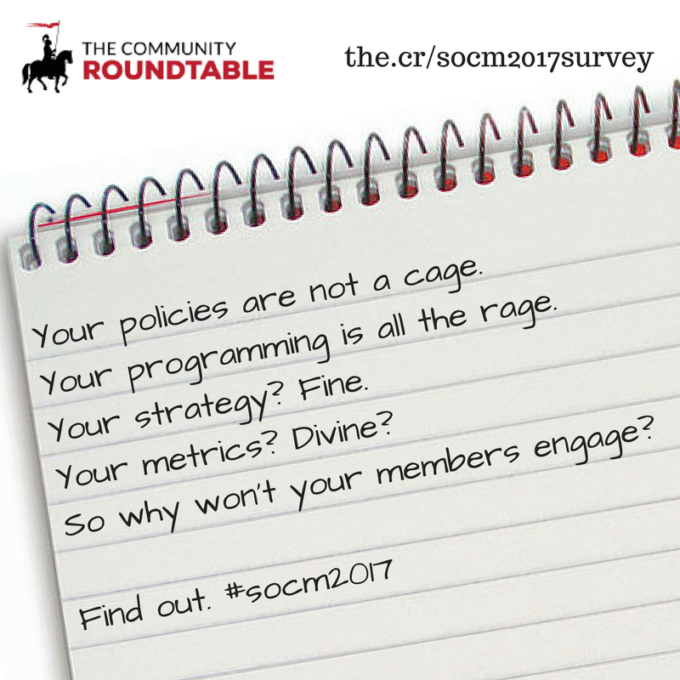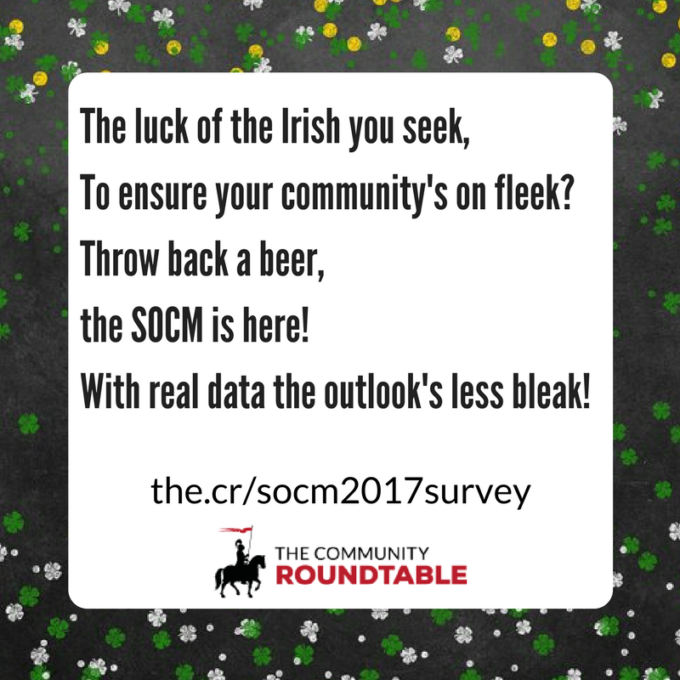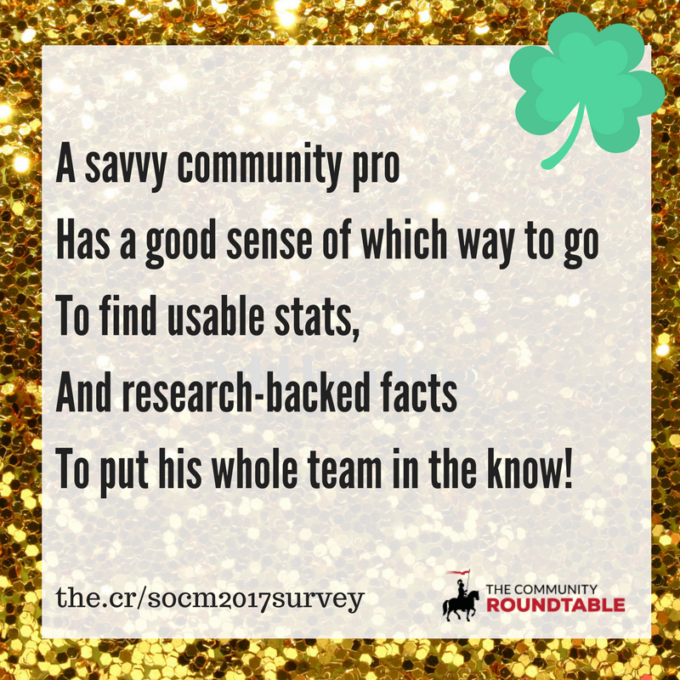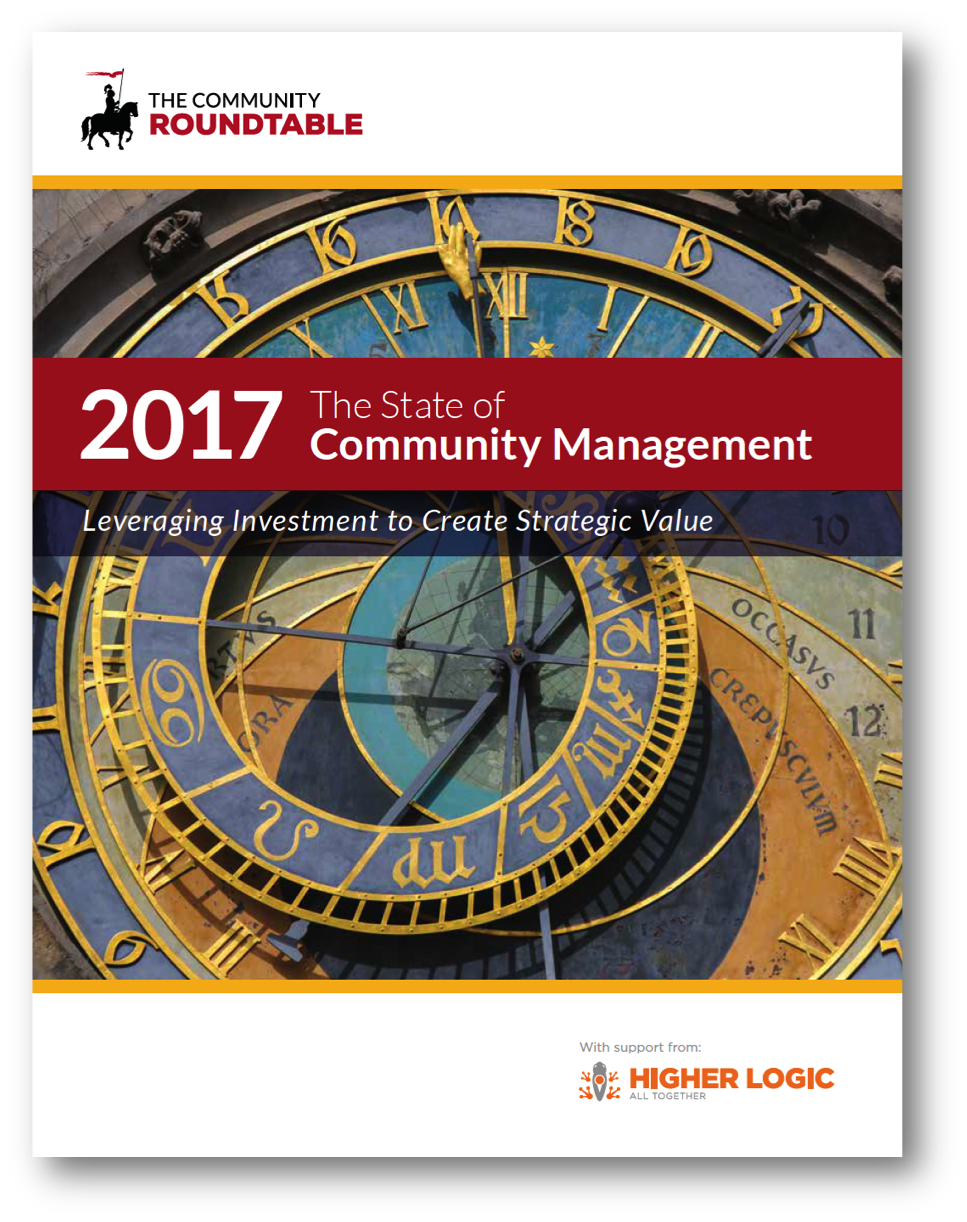 The State of Community Management is our annual research platform that tracksthe performance of communities and community management across the eight competencies of the Community Maturity Model.
The State of Community Management is our annual research platform that tracksthe performance of communities and community management across the eight competencies of the Community Maturity Model.
The SOCM first launched in 2010 and we have published an updated report based on new research. Each year is focused around a key theme that emerges from the research and offers insights and best practices that are still relevant today.
A Look Back at the Evolution of the SOCM
SOCM 2010: From Recognition to Exploration – In 2010 the report compiled and documented what TheCR Network members were learning together.
SOCM 2011: From Exploration to Execution – In 2011 the report consolidated 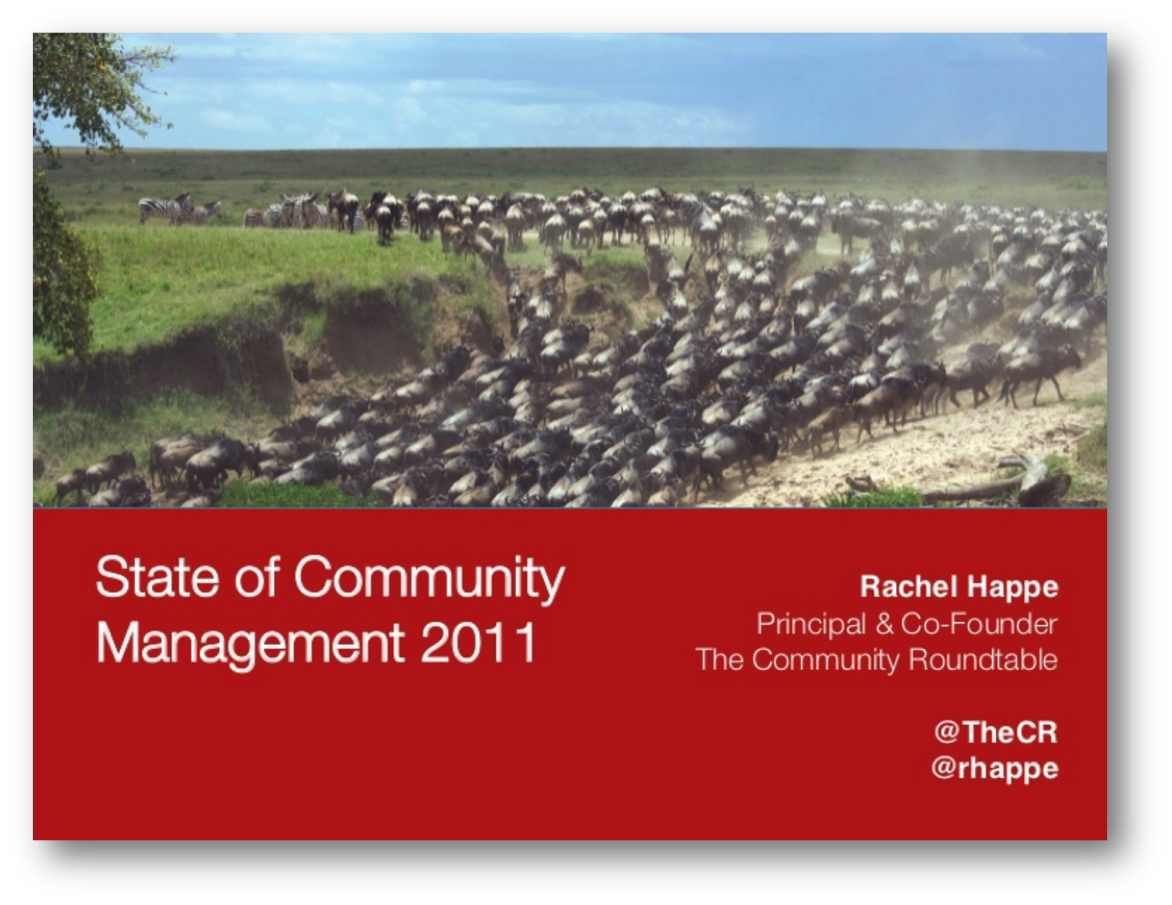 and organized even more common practices, creating a reference guide for community managers to pull from.
and organized even more common practices, creating a reference guide for community managers to pull from.
SOCM 2012: From Exploration to Evolution – The 2012 report took a complementary approach, defining how organizations could advance their community approach across the four stages of the Community Maturity Model, and the strategic, operational and tactical changes that could advance community maturity. We still often refer clients and customers to these reports as a handy reference for new ideas and approaches – while community management continues to evolve, many of the best practices are timeless.
SOCM 2013: The Value of Community Management – By 2013, we were ready to take a more quantitative approach to the science of community. While we had been tracking the demographics of communities as part of the research, the 2013 report was the first to quantify how community professionals were implementing community best practices and the artifacts of community success. 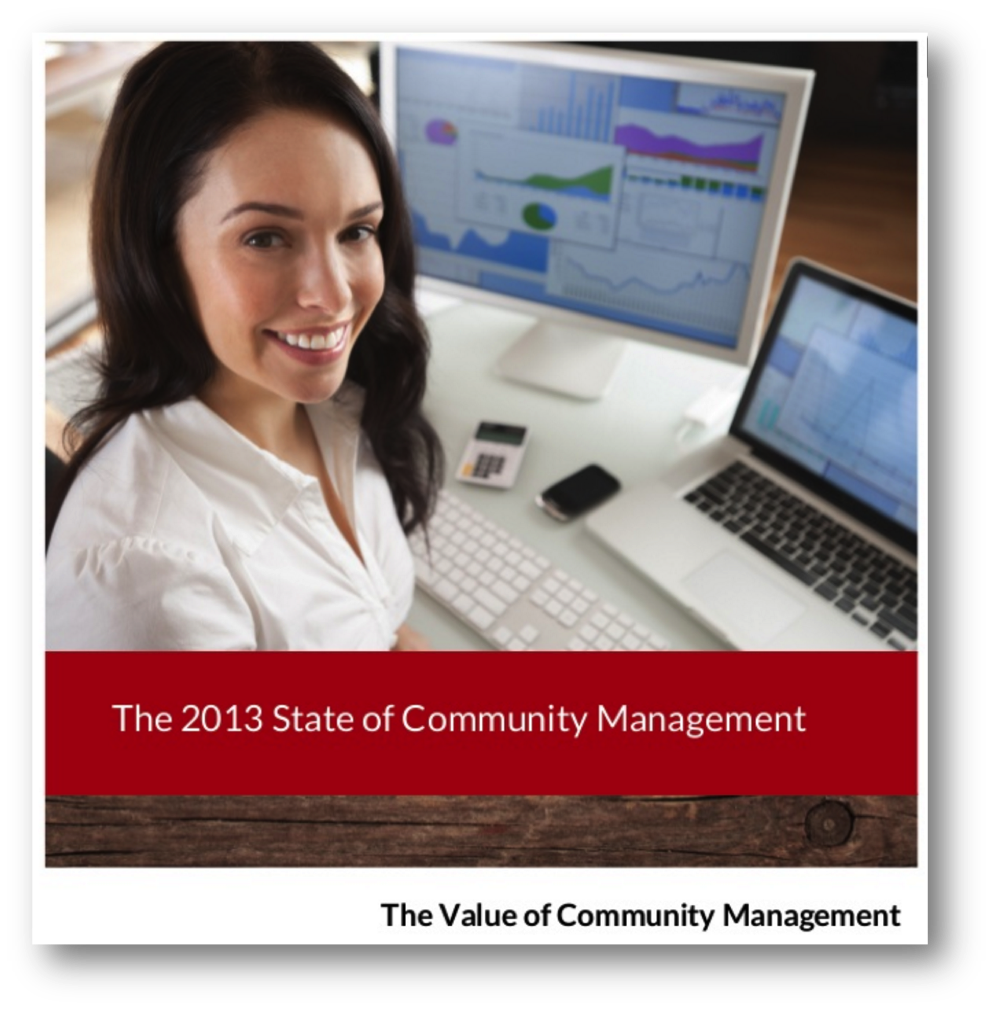 The 2013 report, for example, provided quantified evidence that the traditional 90-9-1 model of social media engagement does not apply to successful communities.
The 2013 report, for example, provided quantified evidence that the traditional 90-9-1 model of social media engagement does not apply to successful communities.
SOCM 2014: In 2014, we expanded the quantitative survey to more than 160 respondents, tracking dozens of artifacts of successful communities and scoring communities for the first time on the Community Maturity Model. By identifying Best-in-Class communities, we could for the first time compare the practices of the most successful and highly engaged communities to the overall sample, and we began to be able to see the connections between community elements that correlated to success.
SOCM 2015: Harvesting the Rewards of Community – 2015 marked a major 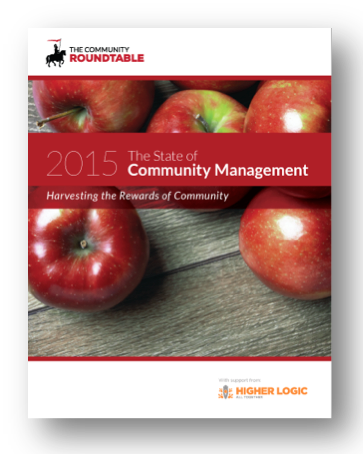 milestone. For the first time, we were able to couple the survey with a scoring mechanism that gave respondents their own scorecard of community maturity. The goal is to give community professionals a rough benchmark that can be used to more effectively compare their own communities with average and best-in-class communities. Benchmarking plays a critical role in helping community professionals understand the current status of their community relative to strategic and organizational goals, and serves as an important element in TheCR’s research and advisory practice.
milestone. For the first time, we were able to couple the survey with a scoring mechanism that gave respondents their own scorecard of community maturity. The goal is to give community professionals a rough benchmark that can be used to more effectively compare their own communities with average and best-in-class communities. Benchmarking plays a critical role in helping community professionals understand the current status of their community relative to strategic and organizational goals, and serves as an important element in TheCR’s research and advisory practice.
SOCM 2016: Quantifying the Value of Community – In 2016 we further refined the scoring for the Community Maturity Scorecards, bolstering the research around organizational culture and measuring strategy. In addition, we launched an experimental section on defining and measuring ROI that could become a larger, more formal part of future reports. Our data set has continued to grow as well, giving us the ability to explore more industries, use cases and community types as their own sets.
SOCM 2017: Leveraging Investment to Create Strategic Value – Our 2017 report features data from more than 330 communities and includes trends, best practices and new insights into how communities manage content, programming, staffing, budgets, strategy, metrics and much more.
How Do People Use the SOCM Research?
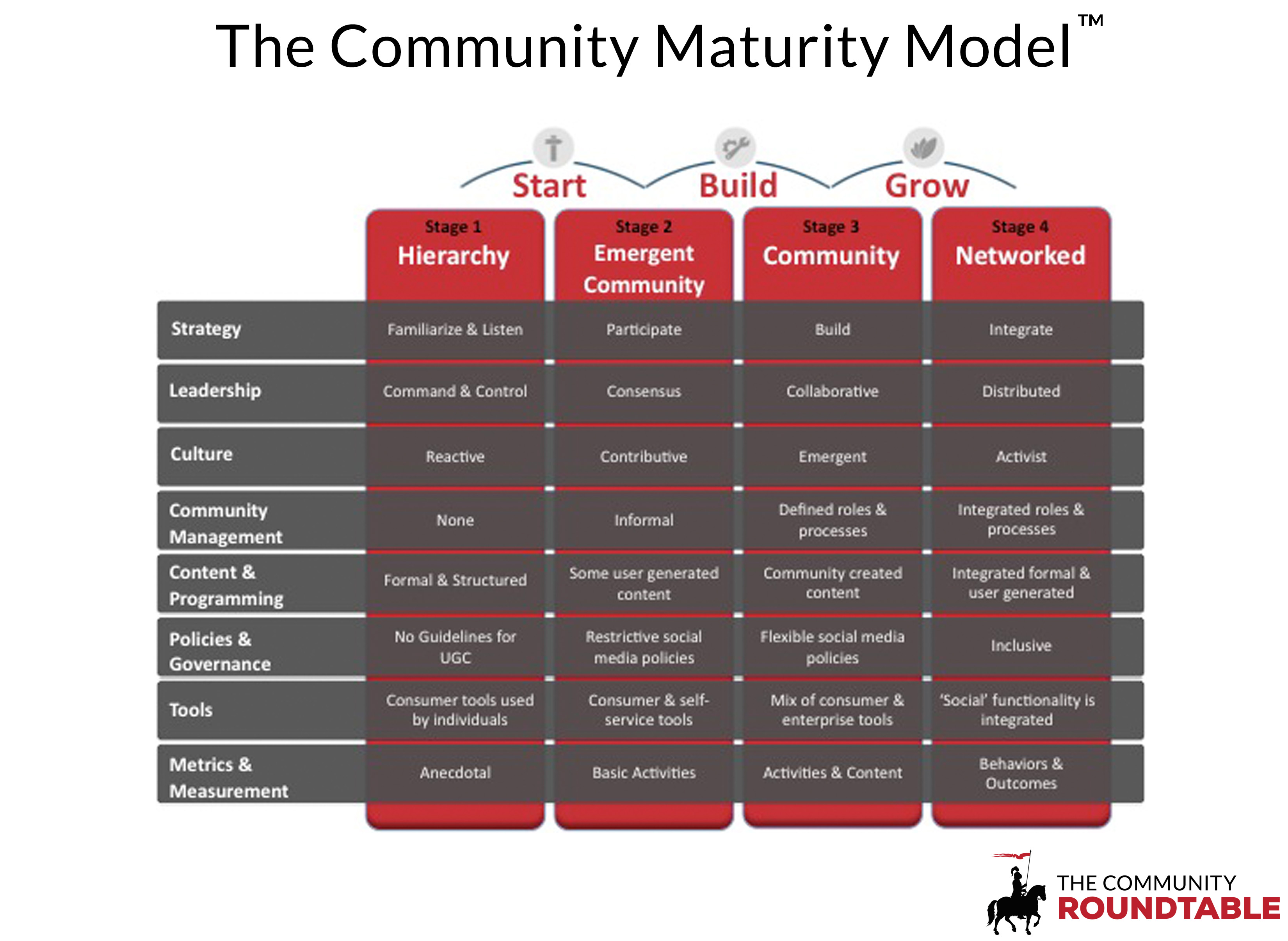
The Community Roundtable’s research aims to provide immediate value to communitypractitioners by capturing the current practices of community management. It is framed by and structured around the Community Maturity Model, which provides a common context for talking about the different aspects of community management.
You can use this research to:
- Validate your approach
- Prioritize your resources
- Inform conversations with stakeholders
- Educate staff
- Assess the maturity of your program
- Identify gaps & opportunities in your program
- Build a roadmap
- Justify budget requests
Community program leaders have leveraged the CMM framework and related TheCR resources to build roadmaps, provide internal consulting and shape community strategy.

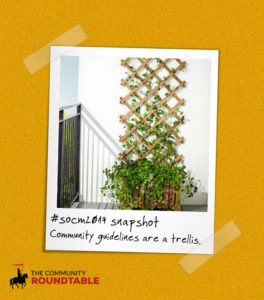 For years, community thought leaders in TheCR Network have
For years, community thought leaders in TheCR Network have 
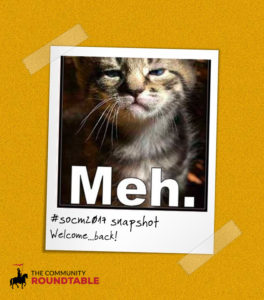 The rise of communities as a powerful tool for behavior change has brought with it no shortage of new platforms and technology. There are large enterprise level platform providers, smaller niche offerings, community offshoots of major social and CRM platforms, and hybrid community-collaboration platforms for community professionals to choose from. (Check out how our own Rachel Happe feels about what’s going on in the vendor space in her post “
The rise of communities as a powerful tool for behavior change has brought with it no shortage of new platforms and technology. There are large enterprise level platform providers, smaller niche offerings, community offshoots of major social and CRM platforms, and hybrid community-collaboration platforms for community professionals to choose from. (Check out how our own Rachel Happe feels about what’s going on in the vendor space in her post “
 One of the most consistent findings in our
One of the most consistent findings in our  If you’re like many communities – you don’t follow up again to see how the settling in process has gone. But maybe you should.
If you’re like many communities – you don’t follow up again to see how the settling in process has gone. But maybe you should.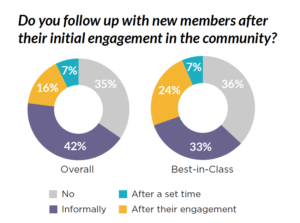 So what can you do?
So what can you do?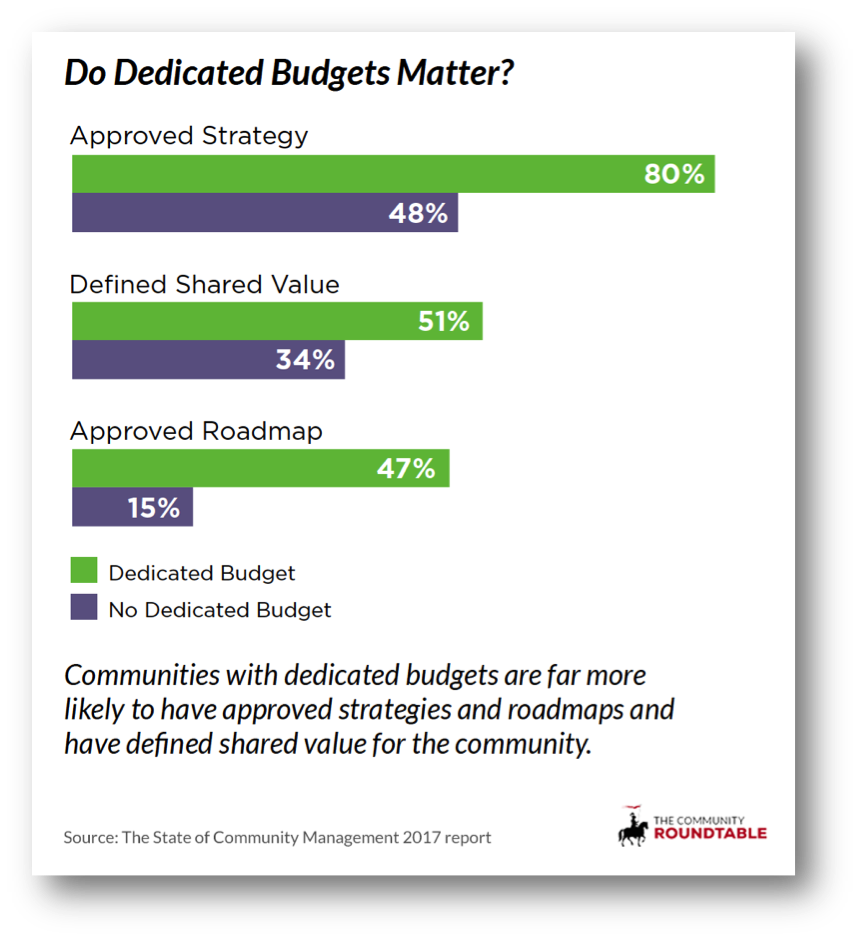
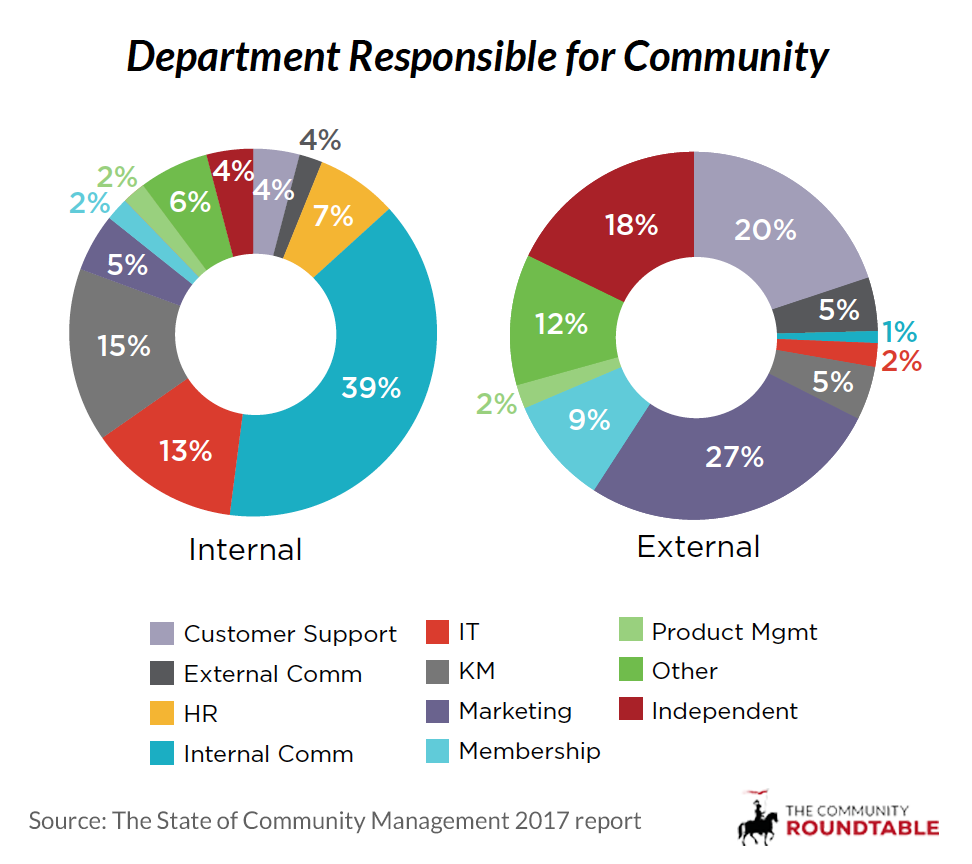
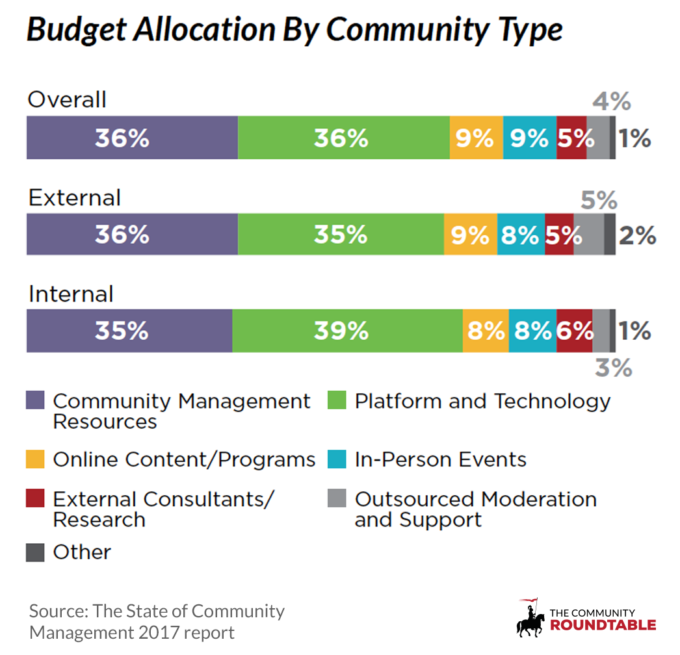 Here’s an interesting piece of data from the SOCM 2017: for the first time, communities say they are spending more on people than on technology.
Here’s an interesting piece of data from the SOCM 2017: for the first time, communities say they are spending more on people than on technology.
